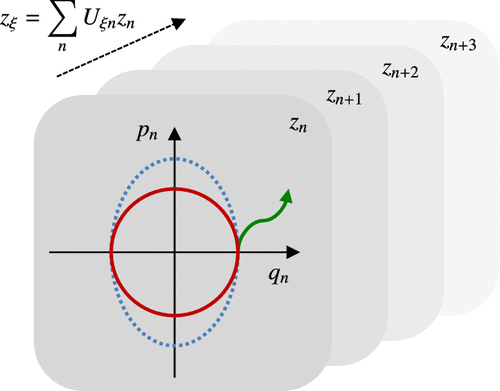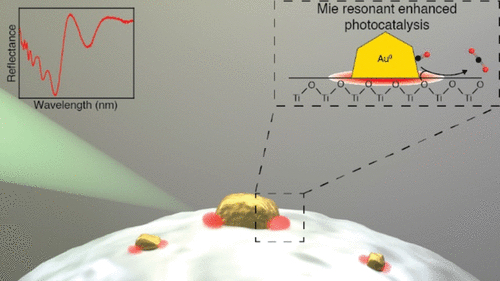Recent Research
Mixed Quantum–Classical Dynamics under Arbitrary Unitary Basis Transformations* (Tempelaar)
 Researchers explore a cost-saving method in quantum computations by transforming quantum systems into simpler forms. This approach extends to classical equations of motion, allowing both quantum and classical systems to be analyzed more efficiently. By grouping positions and momenta into complex coordinates, they simulate interactions between an electronic carrier and an impurity. This method accurately captures system dynamics using fewer resources in both classical and quantum computations. J. Chem. Theory Comput. 20, 15 (2024)
Researchers explore a cost-saving method in quantum computations by transforming quantum systems into simpler forms. This approach extends to classical equations of motion, allowing both quantum and classical systems to be analyzed more efficiently. By grouping positions and momenta into complex coordinates, they simulate interactions between an electronic carrier and an impurity. This method accurately captures system dynamics using fewer resources in both classical and quantum computations. J. Chem. Theory Comput. 20, 15 (2024)
*ACS Editor's Choice
Mie Resonant Metal Oxide Nanospheres for Broadband Photocatalytic Enhancements (Swearer)
 Metal oxides are commonly used in catalysis, either as supports for active nanoparticles or as catalysts themselves. This study introduces a method to create metal oxide supports with tunable optical properties using TiO2 nanospheres. These nanospheres, which exhibit size-dependent resonances, enhance catalytic activity when combined with metals like Au, Pt, and Pd. The research shows a significant increase in catalytic efficiency, particularly in photocatalysis, suggesting a promising approach for improving energy conversion technologies in the chemical industry. ACS Nano 18, 28 (2024)
Metal oxides are commonly used in catalysis, either as supports for active nanoparticles or as catalysts themselves. This study introduces a method to create metal oxide supports with tunable optical properties using TiO2 nanospheres. These nanospheres, which exhibit size-dependent resonances, enhance catalytic activity when combined with metals like Au, Pt, and Pd. The research shows a significant increase in catalytic efficiency, particularly in photocatalysis, suggesting a promising approach for improving energy conversion technologies in the chemical industry. ACS Nano 18, 28 (2024)
Room-Temperature Polariton Lasing from CdSe Core-Only Nanoplatelets (Odom)

This study shows that CdSe core-only nanoplatelets (NPLs) paired with plasmonic aluminum nanoparticle lattices can achieve exciton-polariton lasing. By refining the synthesis of uniform CdSe NPLs, researchers could track polariton behavior and confirm strong coupling through experimental and theoretical analysis. Polariton lasing occurred only with specific lattice designs, significantly lowering the lasing threshold compared to previous photon-based systems. This platform provides an accessible way to control exciton polaritons, potentially advancing quantum information processing, optoelectronics, and chemical reactions. ACS Nano 18, 23 (2024)
